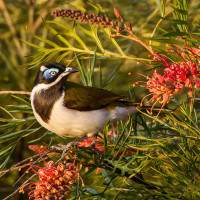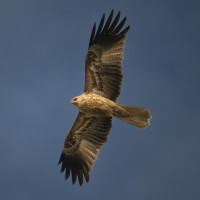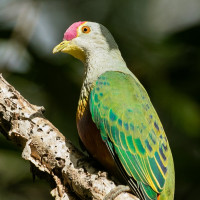Opis
The George Brown Darwin Botanic Gardens cover 42 hectares and are noted for their collections of north Australian and other tropical flora. But the botanical gardens are also a nice place for birding and sometimes surprises do turn up. One of the best birds to see here is the impressive Rufous Owl. It can sometimes be found in the Rainforest walk at the back of the Botanic Gardens. Look in the darkest part of the forest usually between 4 – 10 m off the ground. Other birds you can encounter are Rose-crowned Fruit-Dove, Torresian Imperial-Pigeon, Pacific Emerald Dove, Orange-footed Scrubfowl, Rainbow Bee-eater, Whistling Kite, Little Bronze-Cuckoo, Masked Lapwing, Red-collared Lorikeet and a variety of honey-eaters. Also worth is to check around the water feature near the car park for Barking Owl, which can sometimes be found roosting in the trees near by.
Szczegóły
Dostęp
The George Brown Darwin Botanic Gardens are two kilometres north of Darwin city and accessible by a number of entrances. The main entrance and visitor parking is located at Gardens Rd. A secondary entrance with parking is situated at the end of Geranium street which is a turn-off from Stuart Highway. Pedestrians and cyclists can also access from Gilruth Avenue. Public transport is available by bus number 10 which stops close to the Geranium Street entrance as well as bus number 4 which has a stop close to the Gardens Road entrance. Opening times: 7am to 7pm daily. Visitor Centre: 9am to 5pm daily. Entry to the gardens is free.
The best time of year in Darwin to see a lot of birds is between July - November when water is scarce and the birds are reliant on the small watering holes that are remaining. Between September and November is good because most of the birds in the area are breeding which make them easier to locate and photograph. But be warned as it can be very humid towards November.
Teren i siedlisko
Rzadkie drzewa i krzewyWarunki
Otwarty krajobrazTrasa dookoła
TakCzy luneta będzie przydatna ?
NieUdany sezon obserwacyjny
Przez cały rokNajlepszy czas na wizytę
JesieńTrasa
Szeroka ścieżka , Wąski szlakPoziom trudności szlaku pieszego
ŁatwyDostępne
PieszoCzatownia/platforma obserwacyjna
NieLinki
- https://nt.gov.au/parks/find-a-park/george-brown-darwin-botanic-gardens
- George Brown Botanic Gardens is an eBird hotspot.


